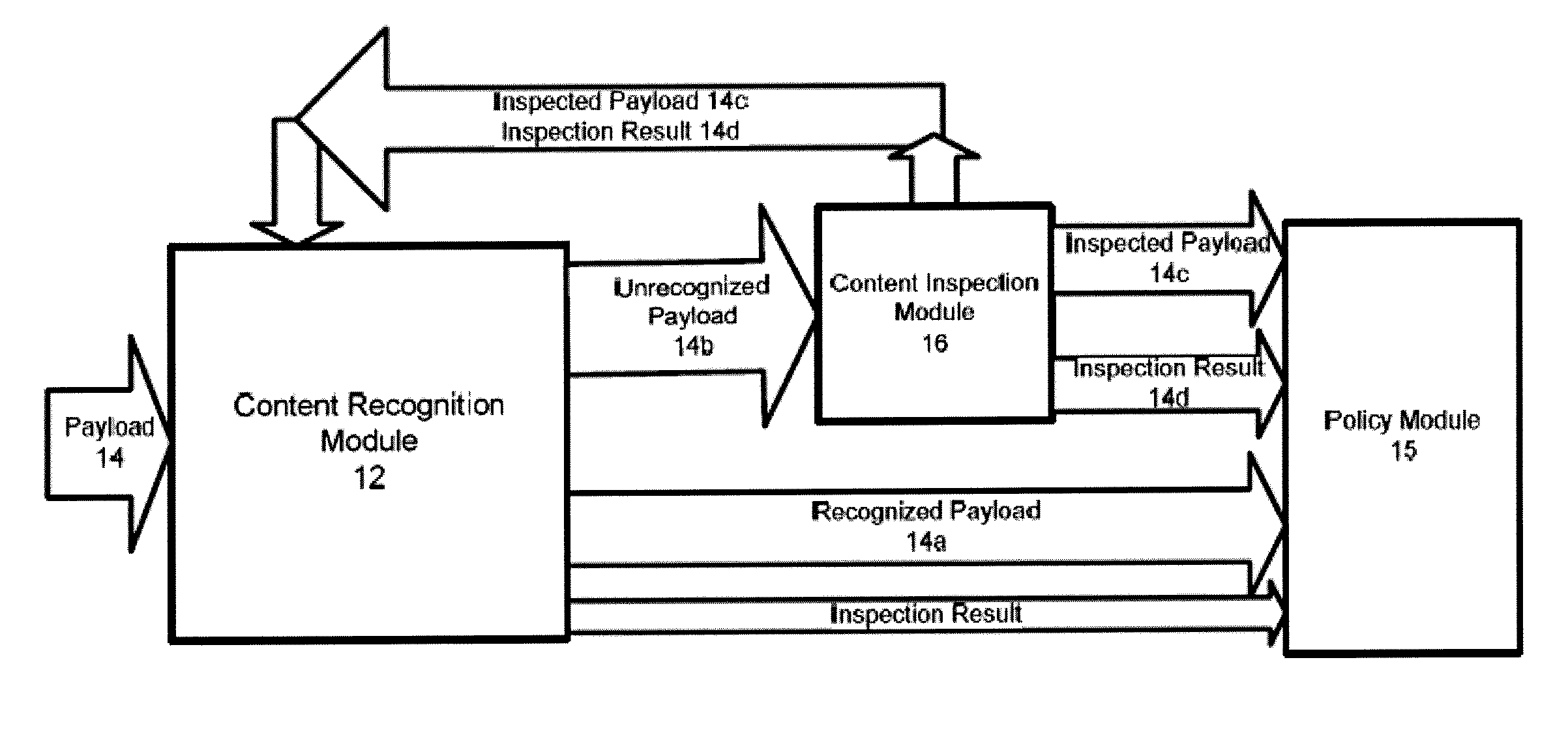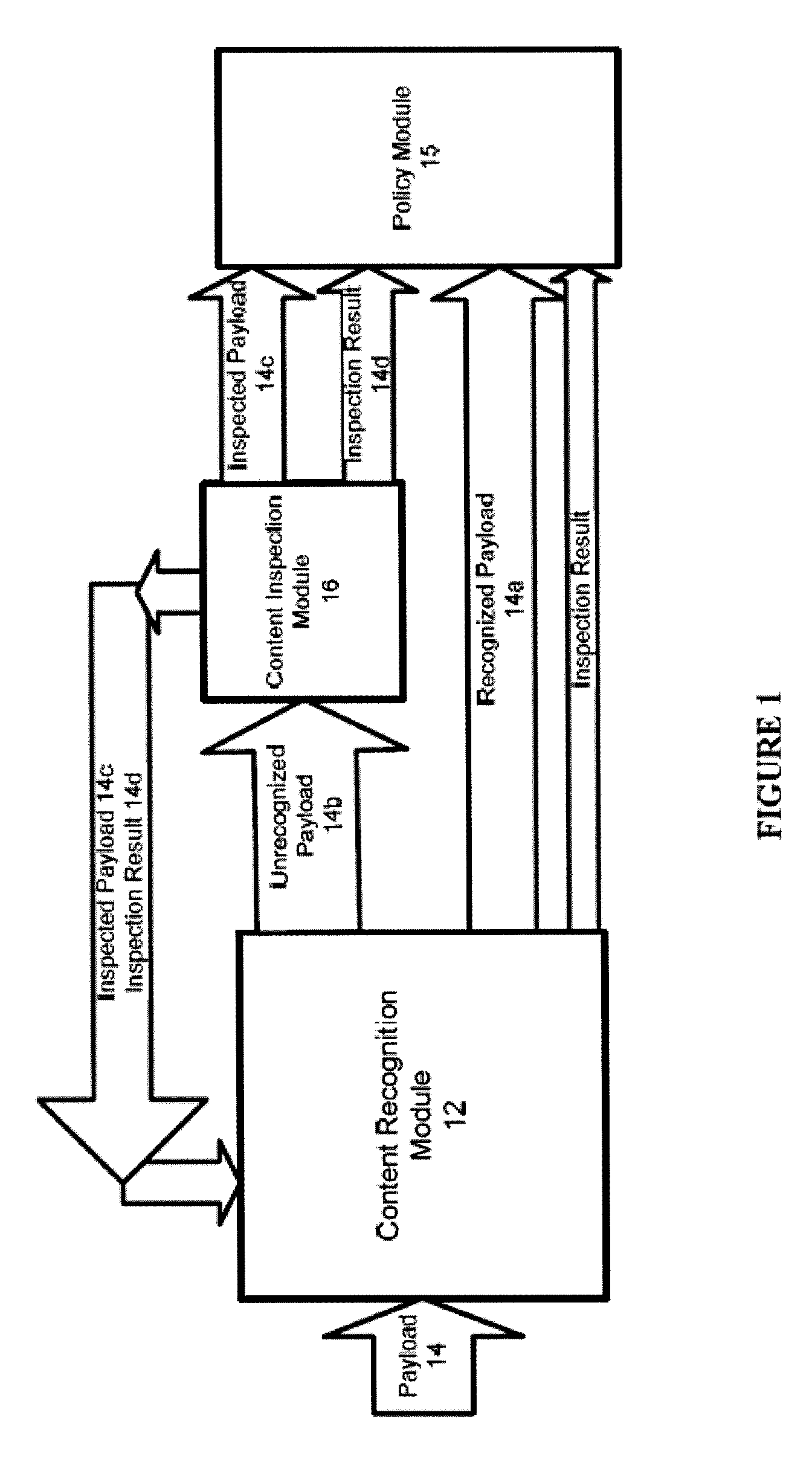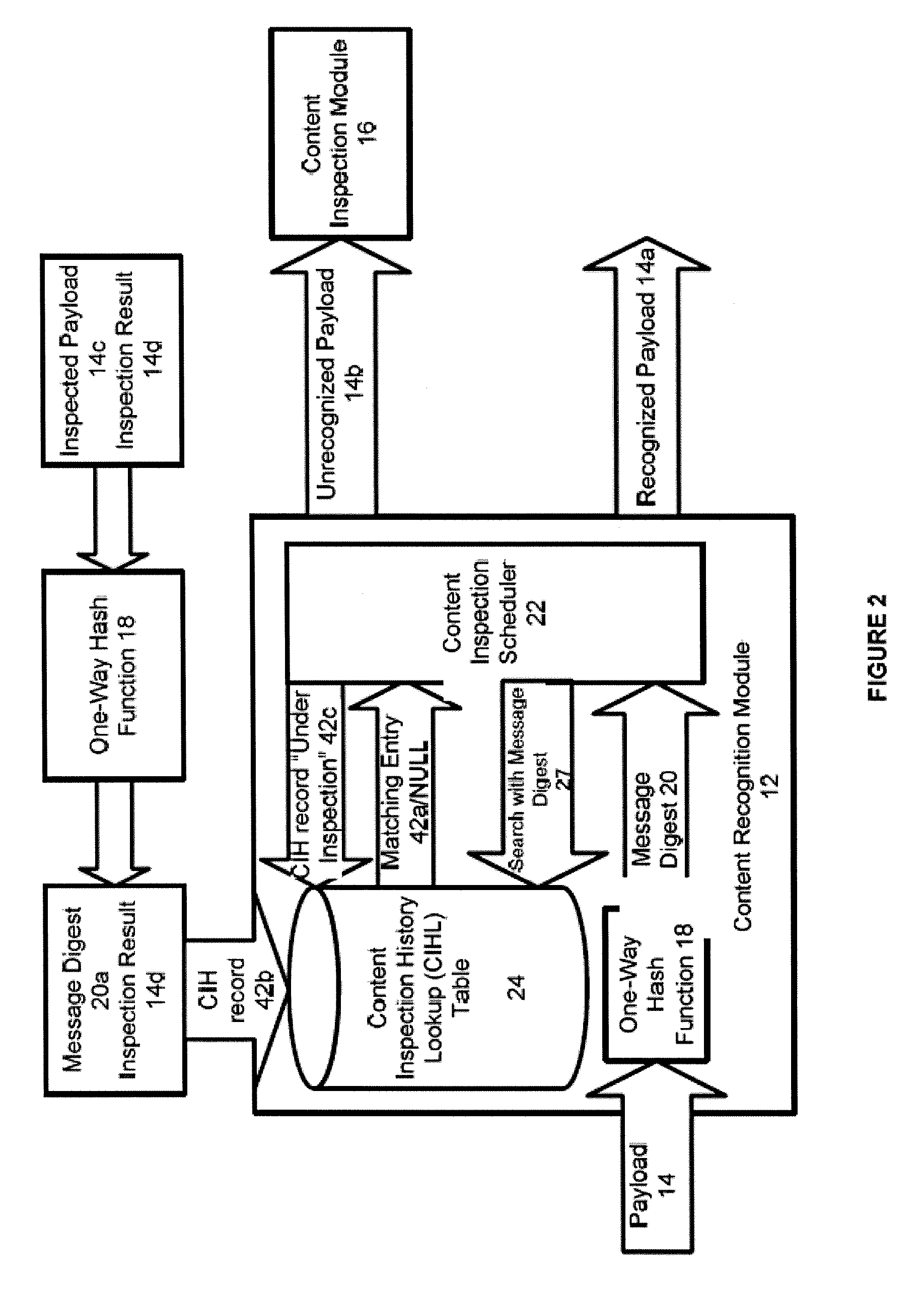Systems and methods for improved network based content inspection
a network-based content and content inspection technology, applied in the field of network-based content inspection, can solve the problems of reducing network performance, affecting the efficiency of content inspection, so as to minimize the risk of message digest collision-based attacks, effective and efficient inspection
- Summary
- Abstract
- Description
- Claims
- Application Information
AI Technical Summary
Benefits of technology
Problems solved by technology
Method used
Image
Examples
Embodiment Construction
[0044]With reference to the Figures, systems and methods for optimizing the computation required to perform content inspection on concurrently received network data packet payloads are described. In the context of this description “concurrently” means data payloads received by a computer network within a short time period such that the system resources considers the data payloads to have been effectively received at the same time or within a short time period.
[0045]With reference to FIG. 1, a content recognition module (CRM) 12 receives a data payload 14. The CRM 12 inspects the data payload to determine if the content of this payload 14 has been inspected previously or is currently under inspection. If the CRM 12 recognizes that the content of the payload 14 has been previously inspected, the CRM will deliver the recognized payload 14a (together with an inspection result as explained below) without subjecting the payload to content inspection. If the CRM 12 determines the payload i...
PUM
 Login to View More
Login to View More Abstract
Description
Claims
Application Information
 Login to View More
Login to View More - R&D
- Intellectual Property
- Life Sciences
- Materials
- Tech Scout
- Unparalleled Data Quality
- Higher Quality Content
- 60% Fewer Hallucinations
Browse by: Latest US Patents, China's latest patents, Technical Efficacy Thesaurus, Application Domain, Technology Topic, Popular Technical Reports.
© 2025 PatSnap. All rights reserved.Legal|Privacy policy|Modern Slavery Act Transparency Statement|Sitemap|About US| Contact US: help@patsnap.com



